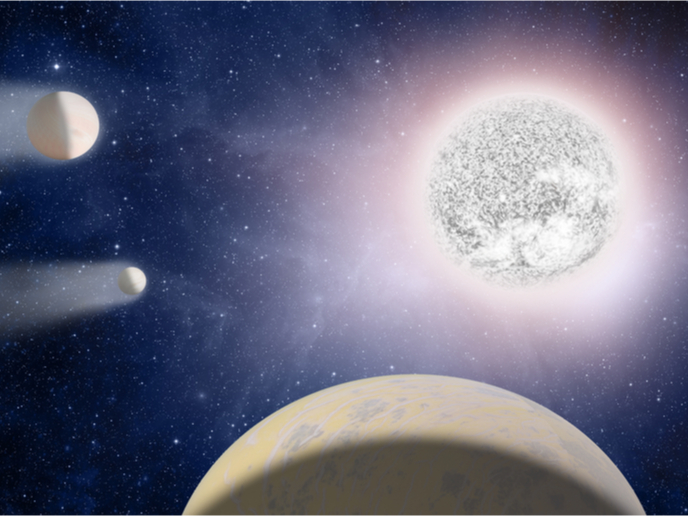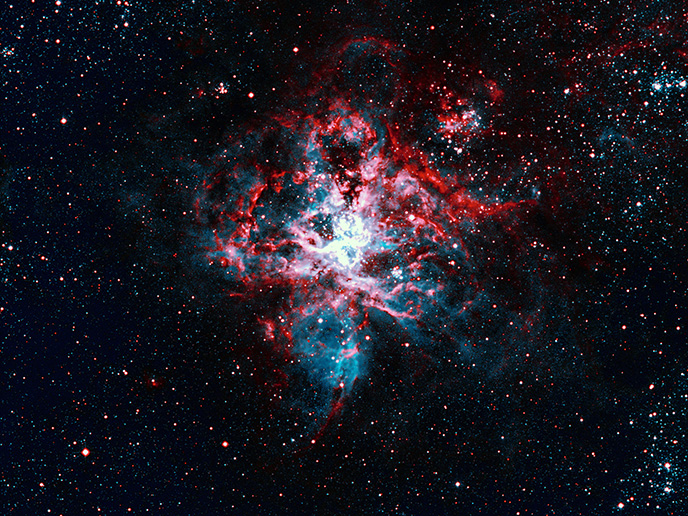Quantum simulations uncover exotic electron behaviour in extreme magnetic fields
Magnetic fields in white dwarfs can reach around 100 000 T, whopping numbers impossible to replicate in the laboratory. Detailed theoretical understanding of strong fields and computational machinery that can handle them feed back into the computational accuracy of weak field behaviour that is vital in boosting not only scientific research but also real-world applications. “Magnetic fields created in the laboratories are weak enough to affect chemical bonds in small molecules. However, there is a size effect mechanism that associates the impact of strong fields on small molecules to that of much weaker fields on larger molecules,” explains Erik Tellgren, coordinator of MAGSPEC – a project funded under the Marie Skłodowska-Curie Actions programme.
Electron dynamics in constant and varying magnetic fields
“Chemistry and molecular physics can dramatically differ in the presence of a strong magnetic field. Electronic states can change their character. We successfully developed computational chemistry methods to study excited states and emission spectrum characteristics,” notes Tellgren. The team derived working equations that extend the functionality of LONDON, a software package that uses Gaussian London-type atomic orbitals to simulate molecular systems in strong magnetic fields. Researchers have also used their code to simulate the electron excited states in small molecules subject to either constant (uniform) or varying magnetic fields. “Magnetic fields that vary in space could give rise to exotic phenomena that mimic the effects of special relativity,” adds Tellgren. “Study results show how a changing magnetic field causes spin-orbit interaction, a relativistic interaction of the electron spin with its motion.”
Electrons breaking the laws of known chemistry
Researchers adapted a model known as Hartree-Fock theory to describe electron ground states, and adapted the random phase approximation to strong magnetic fields to describe excited states. Results showed that when the field strength increased, the ground states changed from closed-shell singlets to states of higher multiplicity. Excited states were found to be more sensitive to magnetic field changes. Polar molecules like lithium hydride subject to weaker fields were more prone to change their electronic state. An intriguing mechanism that could be verified is that a non-uniform magnetic field induces non-collinear spin densities, meaning that the spin direction varies over space to align with the local magnetic field. If only magnetic field effects were present, this alignment would have been perfect. But since the electrons interact with each other and the atomic nuclei, the actual alignment is a complicated competition between magnetic forces and chemical effects. The magnetic forces also break symmetries that typically apply for electron spins. A consequence is that transitions between the ground and excited states that are normally forbidden, because of incompatible spin symmetries, are now allowed. Researchers also studied how non-uniform magnetic fields induce an exotic property known as a toroidal dipole moment in the ground state and studied the relative contributions from spin and orbital motion. Extending the project’s original scope, researchers sought to adapt and refine one of the most popular computational methods – density functional theory – for molecules in strong magnetic fields. “Our research offers tantalising glimpses of the exotic chemistry of atoms and molecules in strong magnetic fields, while they provide a stress test for quantum chemistry. Further understanding of how strong magnetic fields affect atoms and small molecules could also help interpret the magnetic spectra of white dwarfs and uncover possible new chemical bonds that do not occur on Earth,” concludes Tellgren.
Keywords
MAGSPEC, magnetic field, electron, white dwarf, small molecules, chemical bonds, computational chemistry, spin-orbit interaction, quantum chemistry







